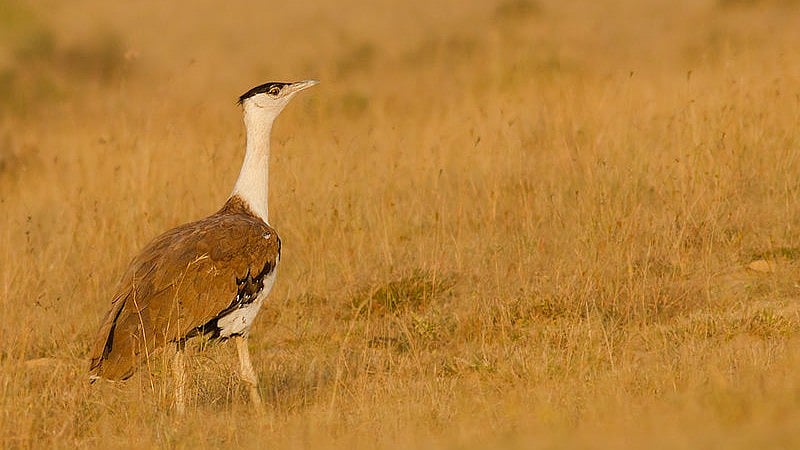The endangered Great Indian Bustard is among the collateral casualties of the escalating Indo-Pakistani tensions, pushing the species closer to extinction.
With fewer than 130 individuals estimated to remain in the wild, the Ramdevra Conservation Centre — located just a few kilometers from the Indo-Pakistan border — hosts India’s only active recovery program for the Great Indian Bustard.
In a high-risk operation led by the Rajasthan Forest Department under the leadership of Principal Chief Conservator of Forests Arijit Banerjee, young chicks were relocated from the volatile border area amid heavy gunfire and artillery shelling. The aim was to protect the last remaining members of the critically endangered species.
The chicks were transported in specially designed vehicles equipped with padded compartments and sand-lined bases to minimize stress during the 10-hour journey.
Indian wildlife officials and conservationists successfully moved nine out of 18 chicks — all born in the past five weeks — from a conservation facility in Jaisalmer to a safer location in Arwar village, Ajmer district, nearly 500 kilometers away.
The young birds, hatched through artificial incubation, are extremely sensitive to loud noises and vibrations, making them especially vulnerable during their early life stages amid mortar shelling and drone attacks.
According to Dr. Sutirtha Dutta, senior scientist at the Wildlife Institute of India, the chicks — aged between five and 30 days — were safely relocated using specialized vehicles designed to reduce trauma.
